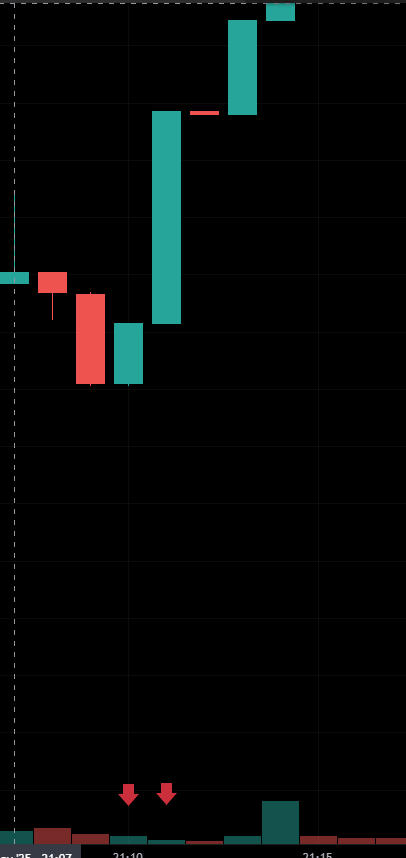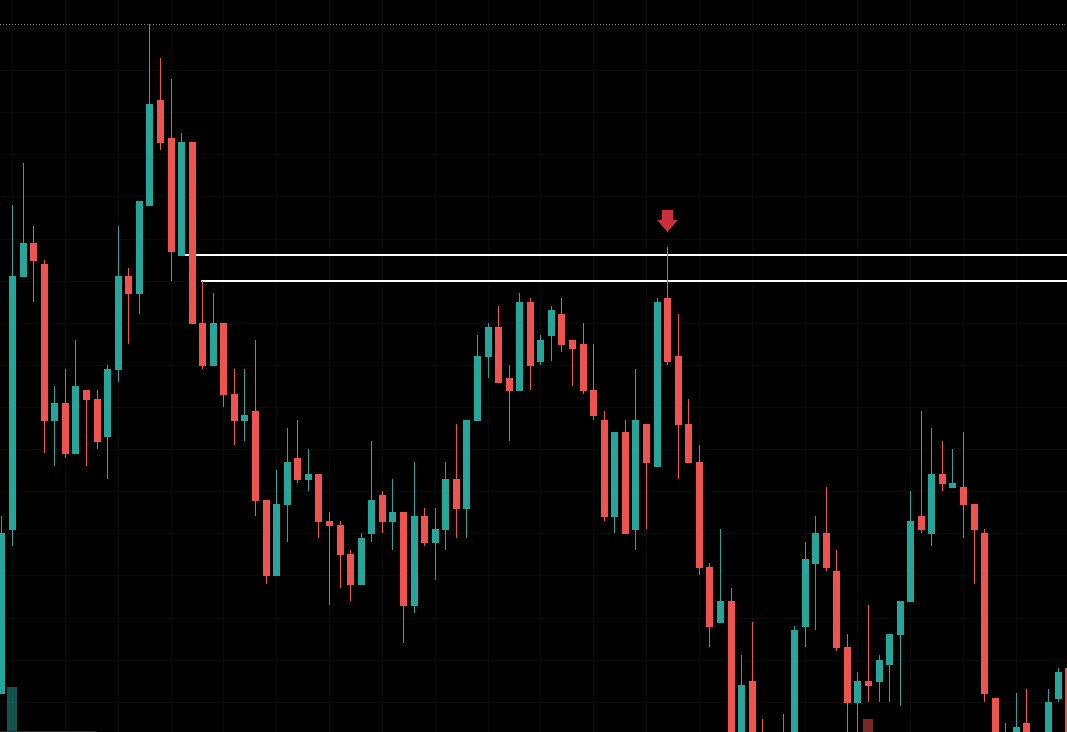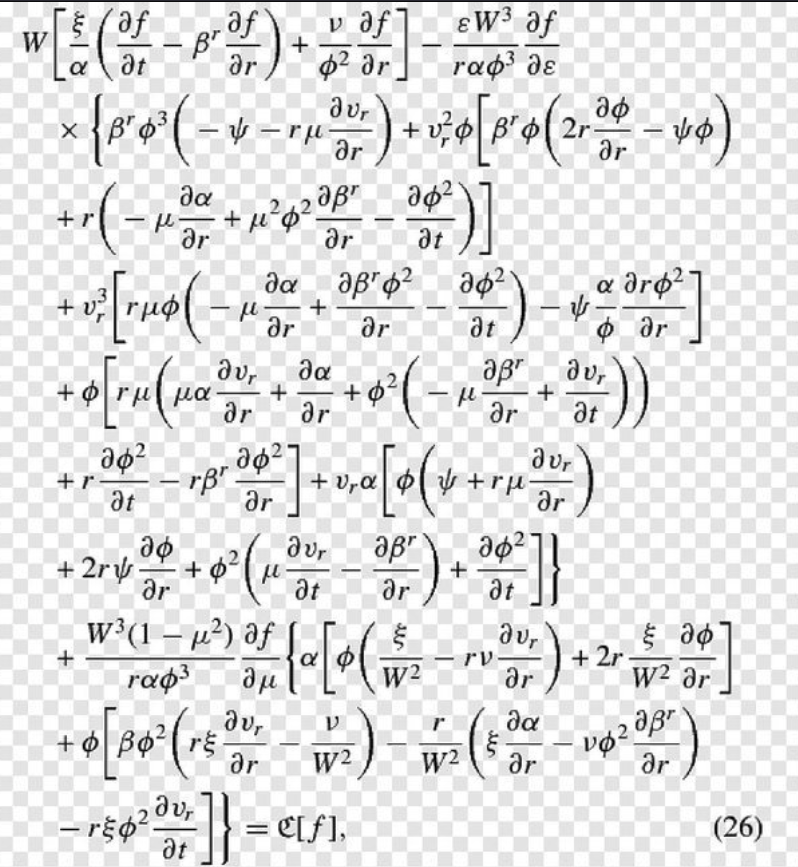Rajesh Kumar Nait / Профиль
- Информация
|
3 года
опыт работы
|
32
продуктов
|
39
демо-версий
|
|
0
работ
|
0
сигналов
|
0
подписчиков
|
В своей текущей роли я занимаюсь ежедневным трейдингом $SOL в качестве дневного трейдера и предлагаю передовые программы для продажи на своей странице продавца. Эти программы включают в себя утилиты для подключения криптовалютных бирж по Websocket и загрузку графиков с всех популярных бирж через Websocket и API. Они работают безупречно на VPS и не требуют внешних DLL.
Если вас интересуют инструменты для криптографического анализа или трейдинга, не стесняйтесь связаться со мной через личные сообщения. Проверьте мои криптопродукты и интеграции с биржами на моей странице продавца MQL5. Я предлагаю поддержку 12 часов в день в часовом поясе IST 7 дней в неделю.
На ограниченный период все продукты доступны со скидкой 30%. Не упустите свой шанс!
This is counterintuitive, but there are solid market microstructure reasons why this happens:
🔍 1. Liquidity Vacuum / Stop-Hunt Trigger
When a market rapidly moves up on low volume, it often means:
Liquidity was thin on the sell side.
A few aggressive buyers cleared the sell wall, triggering:
Stop-losses from shorts (adding buy pressure).
Limit orders above recent lows (creating a vacuum effect).
Result: Price jumps quickly, but volume is still low because not many contracts needed to be traded to move price.
🧠 Think of it like this:
"Price moves the fastest when nobody is willing to sell anymore — not when everyone's buying."
🔍 2. Passive Sellers Withdrew Orders
Another reason: Market makers pulled liquidity because the prior candles looked weak, and they didn’t want to get caught in a reversal.
With fewer passive limit sell orders in the book, even small buy orders push price up more.
This shows up as big candles but low volume.
🔍 3. False Sense of Demand – It’s Not Strength (Yet)
Sometimes big candles on low volume are fake breakouts or traps:
It looks strong, but it’s mostly short covering or bot-driven.
If buyers don’t step in after that candle, it may reverse again — so you want to see confirmation with volume after the big move.


Pionex API EA Connector для MT5 – Бесшовная интеграция с MT5 Обзор Pionex API EA Connector для MT5 позволяет бесшовно интегрировать MetaTrader 5 (MT5) с Pionex API . Этот мощный инструмент дает возможность трейдерам выполнять и управлять сделками, получать информацию о балансе и отслеживать историю ордеров — всё прямо из MT5 . Основные функции 🔹 Управление аккаунтом и балансом Get_Balance(); – Получение текущего баланса аккаунта на Pionex . 🔹 Исполнение и управление ордерами orderLimit(string
Pionex Live MT5 Data and History -- Add the API address to Tools > Expert Advisor api.pionex.com ws.pionex.com Steps : Create Symbols Select CreateSymbols = true Restart MT5 Terminal (Most important) Select Symbols to marketwatch for which you want to load history and live data 1. Add utility to any chart and Select Mode = LiveUpdate to get trade data on chart 2. Add utility to any chart and Select Mode = History to fill history to desired date and time Use MaxDate to add any date you wish to
1. Learn to adapt as per situation
2. Never Be Determined
1. News and Fundamental analysis impact market but it also go against technical analysis or price action
2. Using an indicator can make you successful
3. Fibonacci calculations does not work
4. You do not need custom analysis assistant build on mt5 or other program before you do analysis
5. You can trade and be successful from smartphone or tablet or promotion of portability in trading.
1 year ago i was enjoying this song, my favorite
1. Running Trading & Charting Software
Most trading platforms (e.g., TradingView, NinjaTrader, MetaTrader, ThinkorSwim) rely more on CPU, but they also use GPUs for rendering charts and handling multiple monitors. GTX 970 can:
Smoothly run multiple charts and indicators.
Handle multiple monitors (good for multi-timeframe analysis).
Speed up heatmaps and visualizations of market data.
2. Accelerating Data Analysis & Backtesting
If I am using Python for market research, I can use NVIDIA’s CUDA for faster computations.
Backtesting libraries: I may Use Backtrader or Zipline with GPU acceleration for strategy testing.
Data analysis: Use cuDF (GPU-accelerated pandas) to handle large market datasets faster.
Machine learning: If you're training AI models for price prediction, NVIDIA’s TensorFlow with CUDA can offload computations to your GPU.
3. Running AI/ML Models for Market Prediction
Even though the GTX 970 is older, it supports TensorFlow/PyTorch (CUDA 11.x max) for basic ML models.
I can train simple neural networks for pattern recognition in stock price movements.
Use libraries like TA-Lib (technical analysis indicators) along with GPU-accelerated data processing.
4. GPU-Accelerated Quantitative Research
Monte Carlo simulations: Speed up simulations for option pricing or risk analysis.
Reinforcement Learning (RL): Experiment with Deep Q-Learning (DQN) for algo trading.
Order Book Analysis: Use GPU-accelerated tools for processing high-frequency trading (HFT) data.
5. Cryptocurrency & Alternative Markets
If I trade crypto, GPU acceleration helps in on-chain analysis, sentiment analysis, or even mining
Some platforms like Cryptohopper or 3Commas allow GPU-based automation for backtesting trading bots.
Limitations of GTX 970 for Trading
✅ Good for visualization, backtesting, and basic AI research.
❌ Not great for heavy deep learning or handling massive datasets.
❌ Limited VRAM (4GB) makes it unsuitable for high-end models.




